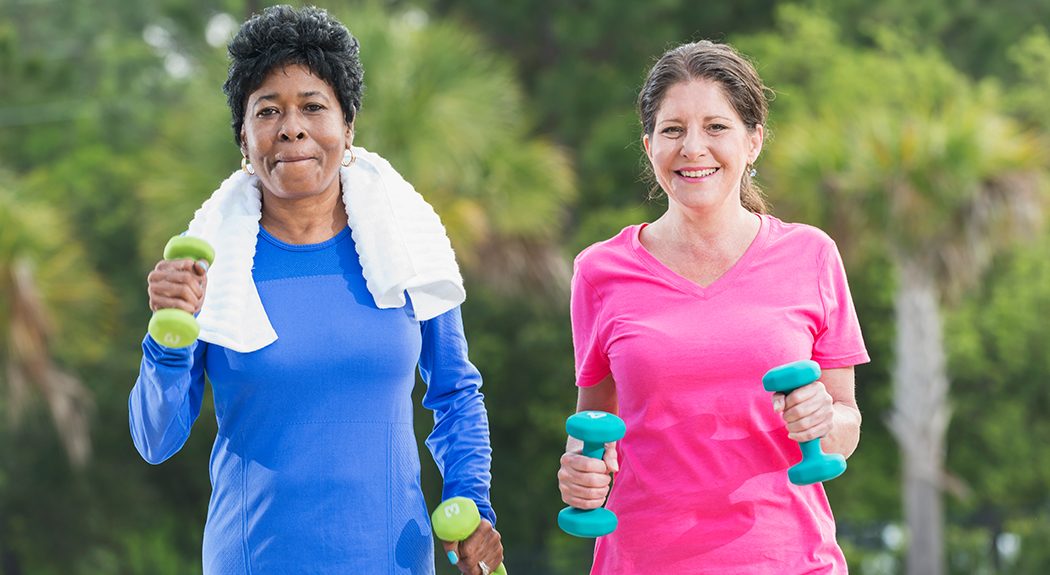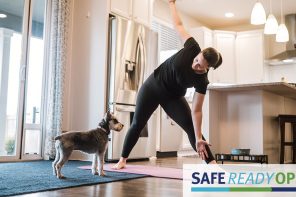In one way, a bone fracture is similar to a heart attack — they are both a sign that something is wrong. Just like a heart attack triggers evaluation of cardiac risk factors like cholesterol and blood pressure, a fracture should trigger a workup of risk factors for osteoporosis.
Although you don’t feel it, your bones are constantly repairing and replacing old bone with new bone. But by the time you reach your mid-30s, you begin to lose bone faster than you replace it. For women, menopause speeds up this process. Over time, this leads to thinner, weaker bones and the potential for developing osteoporosis.
READ MORE: No bones about it: Preventing osteoporosis with these diet and exercise habits
Osteoporosis is a disease that happens when your body loses too much bone, makes too little bone or both, according to the National Osteoporosis Foundation. This leads to weaker bones that can easily break from a fall. And in severe cases, bones can break from sneezing or small bumps.
Osteoporosis is a painless disease until a bone breaks. Bone breaks related to this disease are most likely to happen in the hip, spine or wrist, but other bones can break too. Loss of height can be a sign of a vertebra, or spine, fracture, which can also lead to a stooped or hunched posture.
One in two women over the age of 50 has an osteoporosis-related fracture in her lifetime. It’s important that you get a bone density scan (DEXA scan) to measure bone density and incorporate lifestyle habits that can slow down the weakening of bones. This helps reduce your risk of fractures.
A DEXA (dual-energy x-ray absorptiometry) scan can diagnose osteoporosis. It uses very little radiation and produces detailed information about your bone density. Information is collected and compared to a reference group to determine your “T score.” A “T score” equal to or lower than -2.5 is considered osteoporosis.
There’s also a Fracture Risk Assessment Tool (FRAX®) for evaluating fracture risk. Using the results of the DEXA scan, a FRAX score estimates the risk of a fracture within 10 years.
Unfortunately, many women don’t get screened. Even if they have a fragility fracture, many don’t realize that’s a sign they may have osteoporosis. Bones shouldn’t break with low-energy falls such as from standing height or less. When they do, your doctor may want to run blood and bone density tests to determine if you have osteoporosis. If diagnosed, you should learn about weight-bearing exercise, fall prevention, nutrition and medication options for healthy bones.
Here are some tips to improve your bone health and reduce your risk of fragility fracture:
- Pay attention to your calcium intake. Calcium is essential to building strong, dense bones. In fact, over 90 percent of the calcium in our bodies is deposited in our bones and teeth. Try to get 1,200 mg of calcium a day, preferably from food. If you don’t get enough from food, add a 500-600 mg calcium pill.
- Get enough vitamin D. Like calcium, Vitamin D supports the maintenance of healthy bones at all ages. Many people benefit from a supplement of 800-1,000 iu per day.
- Incorporate weight-bearing exercise into your lifestyle. Try walking 30 minutes a day. Plus, lift weights two or three days per week when cleared by your doctor. Or, if you want to have a little fun, you can play tennis, dance or go for a hike.
- Evaluate your home. Throw rugs, slippery surfaces and poorly lit hallways can lead to falls and then fractures. Make sure you make your surroundings safe and make any changes that are necessary.
- Get your eyes checked. If your sight is impaired, your chance of falling is higher. Schedule an appointment with your eye doctor as soon as possible.
- Eliminate vices. Alcohol and tobacco are two common vices that are detrimental to your bone health.
- Educate yourself. There are many good resources on the web, including the National Osteoporosis Foundation: www.nof.org.
Although osteoporosis is common, it is still a serious, painful and costly disease that can sneak up on you and change your life completely. By talking to your doctor, getting screened and making small changes for your health, you could reduce the risk of developing weak bones. Be good to your bones and they will treat you right!
 Christina Morganti, MD, is an orthopedic surgeon and medical director of the Osteoporosis Program at Anne Arundel Medical Center Orthopedics. She can be reached at 410-268-8862.
Christina Morganti, MD, is an orthopedic surgeon and medical director of the Osteoporosis Program at Anne Arundel Medical Center Orthopedics. She can be reached at 410-268-8862.




